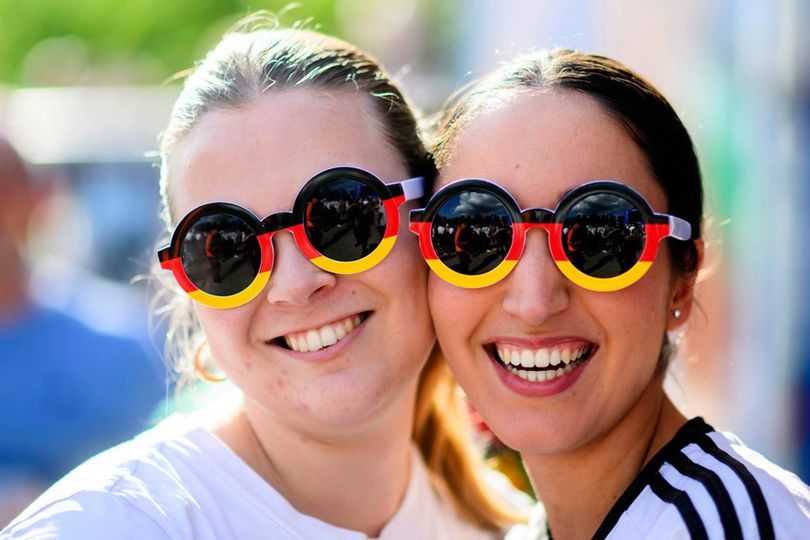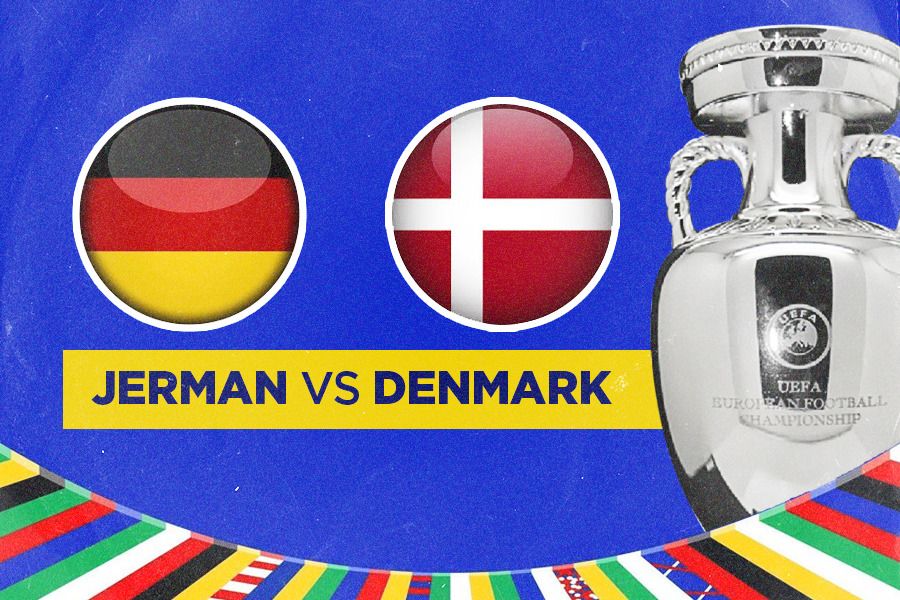Historical Rivalry and Sporting Competitions: Germany Vs Denmark

Germany vs denmark – The rivalry between Germany and Denmark in sports, particularly football and handball, has a long and storied history. Both nations have produced some of the world’s top athletes, and their teams have often faced off in high-stakes matches. These competitions have had a significant impact on the national identities of both countries, and they continue to be a source of pride and passion for fans on both sides.
Football
The rivalry between Germany and Denmark in football dates back to the early 20th century. The two teams first met in 1913, and they have played each other over 50 times since then. Germany has the edge in the head-to-head record, with 25 wins to Denmark’s 14. However, Denmark has had some notable victories over Germany, including a 4-2 win in the 1992 European Championship semi-final.
The battle between Germany and Denmark is not unlike the journey of young talent Alejandro Garnacho. Both face formidable opponents, and both must summon their inner strength to overcome adversity. Garnacho’s skill and determination mirror Germany’s tactical prowess, while Denmark’s resilience echoes Garnacho’s unwavering spirit.
As the match unfolds, we witness the echoes of Garnacho’s journey in the fierce struggle on the pitch.
One of the most memorable matches between Germany and Denmark was the 1992 European Championship semi-final. Denmark was a surprise package in the tournament, and they shocked Germany by winning 4-2. The match was played in Gothenburg, Sweden, and it was watched by a global audience of over 300 million people. Denmark went on to win the tournament, and their victory is still celebrated as one of the greatest moments in Danish football history.
Handball
The rivalry between Germany and Denmark in handball is just as intense as the rivalry in football. The two teams have met each other over 100 times, and they have always been evenly matched. Germany has a slight edge in the head-to-head record, with 53 wins to Denmark’s 47. However, Denmark has won some of the most important matches between the two teams, including the 2016 Olympic gold medal match.
As the thrilling encounter between Germany and Denmark unfolds, our minds wander to another captivating match on the horizon: Switzerland versus Italy. Will Switzerland’s precision triumph over Italy’s flair? Back to the present, Germany and Denmark’s battle rages on, each team determined to emerge victorious.
One of the most memorable matches between Germany and Denmark in handball was the 2016 Olympic gold medal match. Denmark was the defending champion, and they were looking to win their second consecutive gold medal. Germany was the underdog, but they played with great heart and determination. The match was close throughout, and it went into overtime. In the end, Denmark won 28-26, and they claimed their second consecutive Olympic gold medal.
Economic and Political Relations
Germany and Denmark share close economic and political ties, rooted in their shared membership in the European Union and their geographic proximity. These ties have fostered deep cooperation and interdependence between the two countries.
Trade and Investment
Germany is Denmark’s largest trading partner, accounting for a significant share of its exports and imports. Key exports from Germany to Denmark include machinery, vehicles, and chemical products, while Denmark exports agricultural products, pharmaceuticals, and wind turbines to Germany. Both countries have also made substantial investments in each other’s economies, contributing to job creation and economic growth.
Political Dynamics
Germany and Denmark generally share common views on a range of political issues, including support for multilateralism, the promotion of democracy and human rights, and the fight against climate change. However, there have been occasional disagreements, such as over the issue of immigration and the future of the European Union.
Regional and International Cooperation
Germany and Denmark play active roles in shaping regional and international policies. Both countries are members of the United Nations, NATO, and the Organization for Security and Co-operation in Europe (OSCE). They also cooperate closely on issues related to climate change, energy security, and the promotion of sustainable development.
Cultural Exchange and Social Connections
Germany and Denmark have a long and intertwined cultural history, marked by shared artistic traditions, literary influences, and architectural styles. This cultural exchange has been further enriched by the movement of people between the two countries, leading to a vibrant and diverse social landscape.
Artistic Traditions
The two countries have a shared appreciation for the arts, with a rich history of painting, sculpture, and music. German artists such as Caspar David Friedrich and Emil Nolde have influenced Danish painters like Peder Severin Krøyer and Vilhelm Hammershøi. In music, Danish composers such as Carl Nielsen and Niels Gade have found inspiration in German Romantic and Classical traditions.
Literary Influences
German literature has had a profound impact on Danish literature. Authors such as Goethe, Schiller, and Kafka have been widely read and translated in Denmark. Danish authors, in turn, have influenced German literature, with writers like Hans Christian Andersen and Søren Kierkegaard finding a receptive audience in Germany.
Architectural Styles, Germany vs denmark
German and Danish architecture share a common heritage in Gothic and Renaissance styles. In the 19th century, German architects such as Karl Friedrich Schinkel and Gottfried Semper influenced the development of Danish Neoclassicism. In the 20th century, Danish architects like Arne Jacobsen and Jørn Utzon have made significant contributions to modern architecture in Germany.
Cultural Collaborations
The cultural exchange between Germany and Denmark is further fostered by numerous joint exhibitions, film festivals, and educational programs. These collaborations provide opportunities for artists, scholars, and students from both countries to interact and share their ideas.
Social Connections
Immigration and migration have played a significant role in shaping the social connections between Germany and Denmark. In recent decades, there has been a steady flow of people from Denmark to Germany, particularly in the fields of healthcare and education. This has led to the growth of Danish communities in German cities and the strengthening of social and cultural ties between the two countries.
